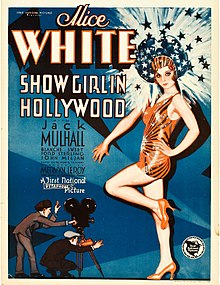
The Jazz Singer is a 1927 American part-talkie musical drama film directed by Alan Crosland and produced by Warner Bros. Pictures. It is the first feature-length motion picture with both synchronized recorded music and lip-synchronous singing and speech. Its release heralded the commercial ascendance of sound films and effectively marked the end of the silent film era with the Vitaphone sound-on-disc system, featuring six songs performed by Al Jolson. Based on the 1925 play of the same title by Samson Raphaelson, the plot was adapted from his short story "The Day of Atonement".
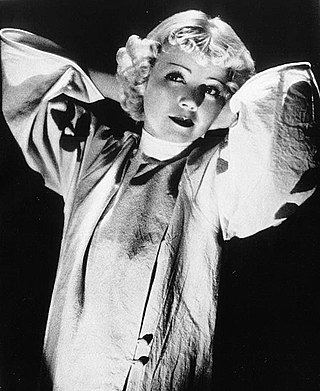
Alice White was an American film actress. She first came to the public’s attention during the late silent era as a rival to Clara Bow, before starring in First National/Warner Brothers films Broadway Babies, Naughty Baby, Hot Stuff, and Sweet Mama.

Noah Nicholas Beery was an American actor who appeared in films from 1913 until his death in 1946. He was the older brother of Academy Award-winning actor Wallace Beery as well as the father of prominent character actor Noah Beery Jr. He was billed as either Noah Beery or Noah Beery Sr. depending upon the film.
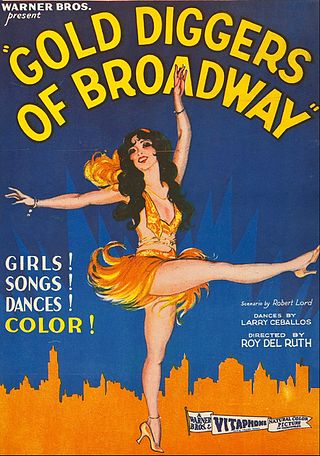
Gold Diggers of Broadway is a 1929 American pre-Code musical comedy film directed by Roy Del Ruth and starring Winnie Lightner and Nick Lucas. Distributed by Warner Bros., the film is the second all-talking, all-Technicolor feature-length film.

The Show of Shows is a 1929 American pre-Code musical revue film directed by John G. Adolfi and distributed by Warner Bros. The all-talking Vitaphone production cost almost $800,000 and was shot almost entirely in Technicolor.
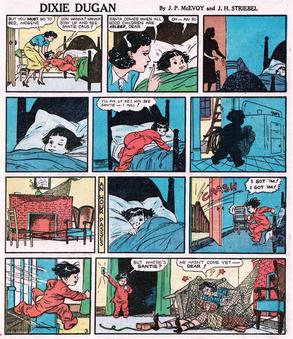
Dixie Dugan is best known as a long-running syndicated newspaper comic strip published from October 21, 1929 to October 8, 1966. The title character was originally modeled after 1920s film actress Louise Brooks and early stories followed Dixie's exploits as a Hollywood showgirl.

Song of the Flame is a 1930 American pre-Code musical film photographed entirely in Technicolor. Based on the 1925 operetta of the same name, the film features a screenplay by Gordon Rigby adapted from the musical book written by Oscar Hammerstein II and Otto A. Harbach for the operetta. The movie also features many of the songs from the operetta which used lyrics by Hammerstein and Orbach and music by George Gershwin and Herbert Stothart. The film was produced and distributed by First National Pictures. It was the first color film to feature a widescreen sequence, using a process called Vitascope, the trademark name for Warner Bros.' widescreen process. The film, based on the 1925 Broadway musical of the same name, was nominated for an Academy Award for Sound Recording. It is part of the tradition of operetta films, popular at the time.

Golden Dawn is a 1930 Warner Bros. American pre-Code musical operetta film directed by Ray Enright that was photographed entirely in Technicolor. It stars Vivienne Segal, Walter Woolf King and Noah Beery.

Bride of the Regiment is a 1930 American pre-Code musical film directed by John Francis Dillon and filmed entirely in Technicolor. The screenplay by Ray Harris and Humphrey Pearson is based on the book of the 1922 stage musical The Lady in Ermine by Frederick Lonsdale and Cyrus Wood, which had been adapted from the 1919 operetta Die Frau im Hermelin by Rudolph Schanzer and Ernst Welisch. The story is a remake of a 1927 First National silent film, The Lady in Ermine, that starred Corinne Griffith. It was later remade by 20th Century-Fox as That Lady in Ermine (1948) starring Betty Grable and Douglas Fairbanks Jr.
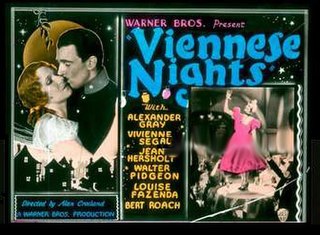
Viennese Nights is a 1930 American all-talking pre-Code musical operetta film directed by Alan Crosland and starring Alexander Gray, Vivienne Segal, Walter Pidgeon, Jean Hersholt, Bela Lugosi and Louise Fazenda. It was photographed entirely in Technicolor and released by Warner Brothers. Viennese Nights was the first original operetta written especially for the screen by Oscar Hammerstein II and Sigmund Romberg. It was filmed in March and April 1930, before anyone realized the extent of the economic hardships that would arrive with the Great Depression, which had begun in the autumn of the previous year. Although not a box office hit in the United States, the film had long box office runs in Britain and Australia. It is one of the earliest sound films to have a short pre-credit sequence.

Bright Lights, later retitled Adventures in Africa, is a 1930 American pre-Code musical comedy film produced and released by First National Pictures, a subsidiary of Warner Bros. It premiered in Los Angeles in July 1930 but was edited and rereleased in early 1931. Although it was photographed entirely in Technicolor, the only surviving print is in black and white. The film stars Dorothy Mackaill, Frank Fay, Noah Beery and Frank McHugh. It also features the screen debut of John Carradine, who appears in a small, uncredited role.
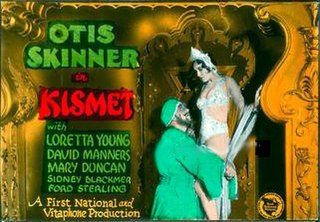
Kismet is a 1930 American pre-Code costume drama film photographed entirely in an early widescreen process using 65mm film that Warner Bros. called Vitascope. The film, now considered lost, was based on Edward Knoblock's play Kismet, and was previously filmed as a silent film in 1920 which also starred Otis Skinner.
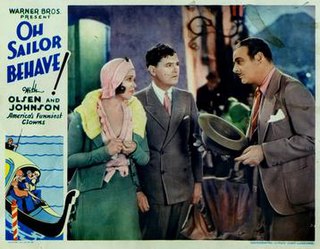
Oh, Sailor, Behave! is a 1930 American pre-Code musical comedy film produced and released by Warner Brothers, and based on the play See Naples and Die, written by Elmer Rice. The film was originally intended to be entirely in Technicolor and was advertised as such in movie trade journals. Due to the backlash against musicals, it was apparently released in black-and-white only.
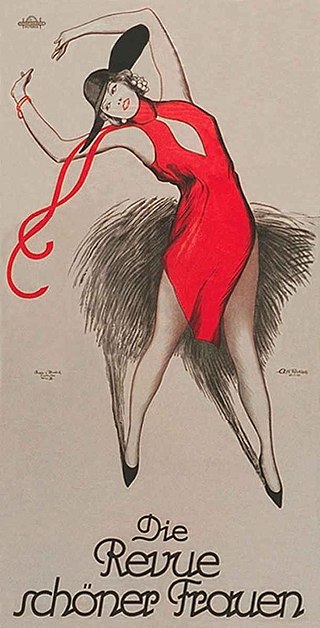
Pretty Ladies is a 1925 American silent comedy drama film starring ZaSu Pitts and released by Metro-Goldwyn-Mayer. The film is a fictional recreation of the famed Ziegfeld Follies. Directed by Monta Bell, the film was written by Alice D. G. Miller and featured intertitles by Joseph Farnham. Pretty Ladies originally featured musical color sequences, some in two-color Technicolor. However, the color sequences are now considered lost.
Show Girl is a musical with music by George Gershwin, lyrics by Ira Gershwin and Gus Kahn, and a book William Anthony McGuire. It ran at Broadway's Ziegfeld Theatre from Jul 2, 1929 to Oct 5, 1929. A backstage musical, much of the action of the musical's story takes place at the Ziegfeld Theatre in New York City. Other scenes take place in Trenton, New Jersey; Brooklyn; and at a Penthouse apartment in New York City. The show tells the story of aspiring showgirl Dixie Dugan as she is pursued by four suitors.
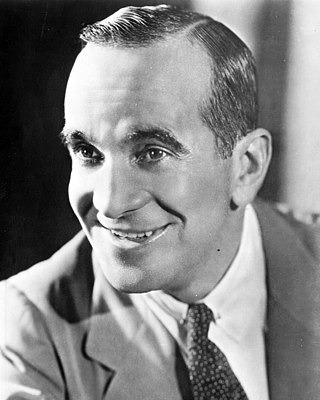
Al Jolson was a Lithuanian-born American singer, actor, and vaudevillian.
Bubbles is a 1930 American Vitaphone Varieties short film released by Warner Bros. in Technicolor. It was filmed in December 1929 at the First National Pictures studio with Western Electric apparatus, an early sound-on-film system, Rel. No. 3898. Bubbles is one of the earliest surviving recordings of Judy Garland on film, at 8 years old.

Vitaphone Varieties is a series title used for all of Warner Bros.', earliest short film "talkies" of the 1920s, initially made using the Vitaphone sound on disc process before a switch to the sound-on-film format early in the 1930s. These were the first major film studio-backed sound films, initially showcased with the 1926 synchronized scored features Don Juan and The Better 'Ole. Although independent producers like Lee de Forest's Phonofilm were successfully making sound film shorts as early as 1922, they were very limited in their distribution and their audio was generally not as loud and clear in theaters as Vitaphone's. The success of the early Vitaphone shorts, initially filmed only in New York, helped launch the sound revolution in Hollywood.

Show Girl is a 1928 American synchronized sound comedy-drama film starring Alice White and Donald Reed. While the film has no audible dialog, it was released with a synchronized musical score with sound effects using the sound-on-disc Vitaphone process. The film was based on the first of J. P. McEvoy's two Dixie Dugan novels, as was the 1929 musical. It was followed by a sequel, Show Girl in Hollywood (1930).

Naughty Baby is a 1928 American synchronized sound comedy film directed by Mervyn LeRoy and starring Alice White and Jack Mulhall. While the film has no audible dialog, it was released with a synchronized musical score with sound effects using the sound-on-disc Vitaphone process. It was released on December 16, 1928, by First National Pictures.
